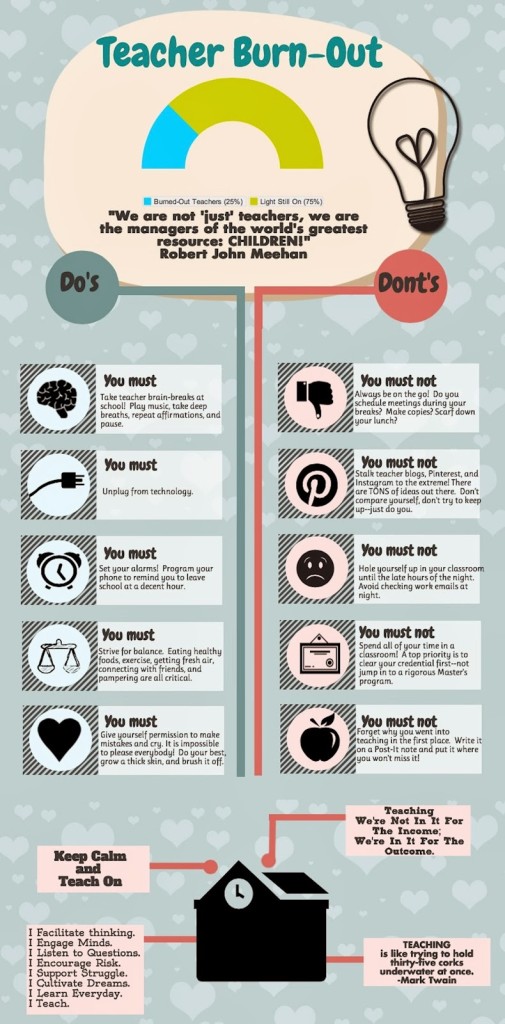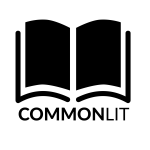Building Capacity and Distributing Leadership
 Building capacity means building relationships. We all do it at some level, it is a simple interaction between two people. But thoughtful and intentional capacity building takes a deeper understanding of relationship building and a targeted approach. It also takes a careful examination of self as coach. “He who dares to teach must never cease to learn” (Fiore & Whitaker, 2005). This includes teacher leaders and administrators!
Building capacity means building relationships. We all do it at some level, it is a simple interaction between two people. But thoughtful and intentional capacity building takes a deeper understanding of relationship building and a targeted approach. It also takes a careful examination of self as coach. “He who dares to teach must never cease to learn” (Fiore & Whitaker, 2005). This includes teacher leaders and administrators!
If we are not in education to learn and to help each other, then we must rethink what we are in it for. Schools have shifted to cultures of collaboration rather than competition. An excellent leader or administrator doesn’t mind letting others help lead. And a superior leader will help develop and support staff so that they can help lead the school.
School systems are plagued with implementing program after program. “Stuff” often gets in the way of allowing the talent we already have in our buildings to help grow our own. We call teachers who have been trained in a variety of methods, programs and skills to successfully teach our children. We need to tap into that same talent to successfully participate in leading our teachers.
Cognitive coaching is a process to help students become more thoughtful about their learning and to help teachers become more thoughtful about their practice. If the teacher can become more reflective in practice, then the transfer of that reflection will indeed pass through to more successful students. Through cognitive coaching, teachers begin to internalize and use with their students the coaching behaviors of gathering data, questioning, probing, and paraphrasing. Students begin to think more critically about the process of their learning as opposed to the product of their learning. And so learning for the sake of learning as opposed to “for the sake of a grade” begins to transform the classroom. Students are self motivated, teachers are constantly probing and a raised consciousness in the classroom is created.
Through cognitive coaching, principals and instructional coaches can help identify teachers that may have hit a “ten year plateau” (some call burn out) and find solutions for growth for that teacher. There may be a variety of reasons for a plateau, it could be the school culture, it may be life stages or changes in a personal situation. Regardless of the reason the plateau may be an opportunity for redirection or career development. The plateau should offer a platform for dialogue to break through and tap into a growth mindset rather than a fixed mindset. It is a platform to turn on potential and happiness in ways that may have seemed impossible. With a growth mindset and goals in place for evolvement we can begin to plan action steps achieve peak behavior. It helps us to stop wasting time on things that are no longer of value in our classrooms and to focus on the things that leverage our time and energy in spectacular ways to help students achieve.
This is vital to our 21st century learners as the ability to change and grow is the only choice as technology continues to advance with or without us aboard its magic carpet.
Building capacity means understanding how technology is changing the landscape of education. Educators can barely keep up with the endless number of websites and apps to utilize and introduce to their classrooms. Districts are pushing more and more devices into the hands of students, yet teachers are expected to have a whole new level of understanding and training that couples the gadgets. Districts are eager to increase the number of devices, but haven’t kept up with the highly qualified and trained instructional technology staff that is needed to support the teaching and learning. Fully supportive training systems for educators is an essential key towards thoughtful, purposeful, and intentional planning. Randomly throwing out a list of sites and apps is like saying to teachers “We are implementing a new program “Jabba the Hutt” but you will be required to figure it out on your own.” It has much been like a game of 52 card pick up.
Marc Prensky has said “teachers are digital immigrants and students are digital natives”. Leaders must understand that technology is not intuitive to many of our teachers. They require well planned training, modeling and co-teaching opportunities with trained instructional technology staff. They must be revisited with progress reports and revisions and continual cycles of development. “Three important trends in technology education need to be recognized: 1) the changing nature of learners, 2) the increasing use of technology, 3) the growth of e-learning technology, particularly task simulation activities.” The skills and knowledge students learn from embedded tech training is as equally important as the content knowledge they learn as they enter the workforce. This is a huge shift in the importance of technology as an integrated piece of purposeful planning by the teacher. A commitment to technology is demonstrated through experiences and assessments requiring the use of technology to collect, organize, analyze and present information. Effective use of educational and informational technology is evidenced in a variety of ways: online; interactive; televised; web based and internet based classes; hybrid/blended models of instruction; electronic communications; electronic portfolios and the list goes on!
Building capacity means continual learning. The teacher is truly a lifelong learner. Embracing that philosophy and transferring it to students is key in building capacity. To be better teachers, we need to be better learners. The reflective practitioner uses self reflection as a tool to examine and improve constructively.
Gone are the days of “sit and get” professional development/workshops with thick notebooks to fill your shelves. Teachers are engaging in PLCs at school and PLNs on their own time. Meal plan types of seminars and mini conferences are replacing key note speakers so teachers can select what they need rather than be forced to get something they either have had before or totally uninterested in. Open learning blogs are offered as a blended 24/7 question answer supports to scaffold continual learning.
Here’s an example: A school district migrated to a new email system. The system includes a digital calendar, document sharing, webportals, and more. Rather than one person come out to the school and formally train the whole staff in the entire product, blocks of time are separated out into a variety of offerings related to the product. Some blocks are at beginning levels and others at advanced. The attending staff each get a punch card/passport to evidence their attendance at three out of five offers. Follow up onsite open labs are offered throughout the year to revisit training, answer follow up questions, and assist teachers as they continue to learn and use the new product. Teachers may attend voluntarily or upon recommendation from their administrator to demonstrate professional growth. Open learning blogs are offered for continual live FAQs and support.
Just as we expect differentiation for our students, we must begin to do the same for our teachers. Our teachers have expertise in areas that should never be overlooked and should always be honored and developed through similar best practices we expect them to model.
Building capacity means actively distributing leadership. Doing so will extend beyond workshops, Professional Development, book studies and a leadership group. These are an important piece of building teacher leaders, but there is more. It means allowing teacher leaders to lead. Peter Senge, author of The 5th Discpline, states “It’s just not possible any longer to figure it out from the top and have everyone else following orders of the grand strategist.” Let your teachers take the reins. Allow them to lead your school. Schools that truly excel in the future will discover how to tap into faculty and staff commitment and capacity to learn at all levels of the school organization. It will require teachers and administrators to see the big picture. A great administrator will tap in to the talent of all professionals in the building. Building capacity should be an active rather than passsive process that promotes distributive leadership rather than a pecking order. It also will mean that there is a shared sense of success when there are a vaiety of teacher leaders rather than the same one or two people leading faculty meetings and PLCs. Also be careful, rather than hand picking individuals to be part of the leadership team consider an open forum. Creating a hand picked team often unintentionally creates hurt and animosity between staff. It can also unintentionally create an unwanted target on the chosen few. “Distributed leadership allows teachers to share their expertise and create a collective responsibility for improving student learning — and teaches (school and) district leaders the value of inviting teachers into leadership.” (Kennedy & Deuel 2011) To create an open forum invite ALL staff to participate in a Leadership team, explain the purpose and goals of the team and ask staff to purposefully consider how their gifts and talents can add value to the team during the course of the upcoming school year. Unveil the framework of the team including mission, schedule of meetings, and expected outcomes. Explain that a full commitment is expected for all participants. Teachers can and ought to be the vehicle by which teacher improvement works, rather than being the object of teacher improvement (Lieberman and Miller 1990).
(More coming on this section soon!)
RESOURCES:
Harris and Sass (2007). “Teacher Training, Teacher Quality, and Student Achievement.”
Boyd, Lankford, Loeb, Rockoff, and Wyckoff (2008). “The Narrowing Gap in Teacher Qualifications and its Implications for Student Achievement.” NBER Working Paper 14021.
Clotfelter, Ladd, and Vigdor (2006). “Teacher-student matching and the assessment of teacher effectiveness.” National Bureau of Economic Research. 6 Rivkin, Hanushek, and Kain (2005). “Teachers, Schools, and Academic Achievement.” Econometrica, 73(2), 417-458.
Fiore, D. J., and T. Whitaker (2005). Six Types of Teachers; Recruiting, Retaining, and Mentoring the Best. Larchment: Eye on Education. Print.
Goldhaber and Theobold (2010). “Assessing the Determinants and Implications of Teacher Layoffs.” Center for Education Data & Research, University of Washington-Bothell.
Kennedy, A. and Deuel, A. (2011). “Requiring Collaboration or Distributing Leadership.” Phi Delta Kappan Magazine, Sage Journals, 20-24.
Lieberman, Ann, and Lynne Miller. “Teacher Development in Professional Practice Schools.” Teachers College Record 92, no. 1 (1990): 105-122.
http://www.unf.edu/~s.gupta/pubs/simulation%20and%20training%20-%20BEF%202007.pdf














